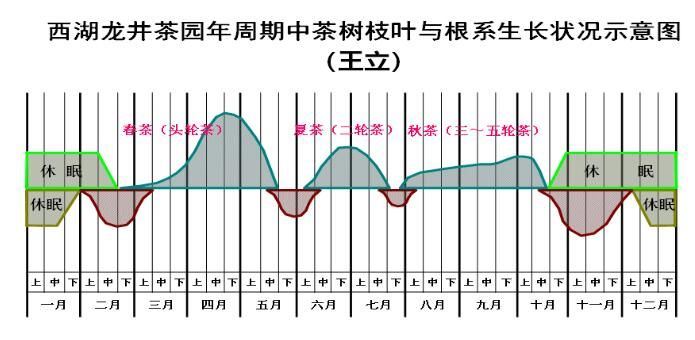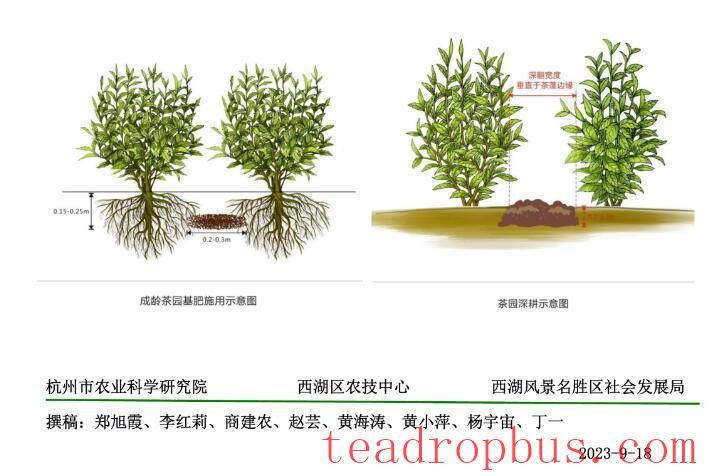The fertilization management of the West Lake Longjing tea plantation is determined based on the growth characteristics of Tea plants and the picking requirements of the West Lake Longjing production area. To summarize: “Ample base fertilizer, skillful top-dressing; mainly organic fertilizer, supplemented by compound fertilizer.”
The timing for applying base fertilizer: Mid-October to early December is the most vigorous period for root growth of West Lake Longjing tea plants. With a large growth volume and strong nutrient absorption capacity, applying base fertilizer before the peak of root growth (mid- to early October) yields the best results, benefiting Spring Tea growth the following year.

Varieties for base fertilizer application: Primarily organic fertilizer, with appropriate supplementary fast-acting nitrogen, phosphorus, and potassium fertilizers. Organic fertilizers can include 250-300 kg per mu of rapeseed cake, or 600-800 kg per mu of sheep manure or other livestock manures, or 500-700 kg per mu of commercial organic fertilizers; fast-acting fertilizers may include 30-50 kg per mu of high-nitrogen compound fertilizer, or 15-20 kg per mu of urea.
Method for applying base fertilizer: Apply at the vertical position of the tea plant canopy, then immediately deep plow (20-20 cm deep) or apply in trenches and cover with soil (trenches 20-25 cm wide and 20-25 cm deep). Do not scatter. Important points to emphasize three times: base fertilizer must be applied deeply! Base fertilizer must be applied deeply!! Base fertilizer must be applied deeply!!! Combining base fertilizer application with deep plowing of the tea plantation buries the fertilizer, allowing organic fertilizers to decompose better in the soil, reducing loss, and facilitating better absorption by the tea plants. Simultaneously, deep application of fertilizer encourages downward growth of the tea plant roots, which significantly improves the plant's drought resistance.
The base fertilizer and deep plowing in the tea plantation should not be delayed beyond the end of October; otherwise, it will sever newly grown roots of the tea plants, affecting nutrient absorption during winter. When deep plowing, dig deeper (20-30 cm) in the middle of the tea rows and shallower (10-20 cm) closer to the roots.
